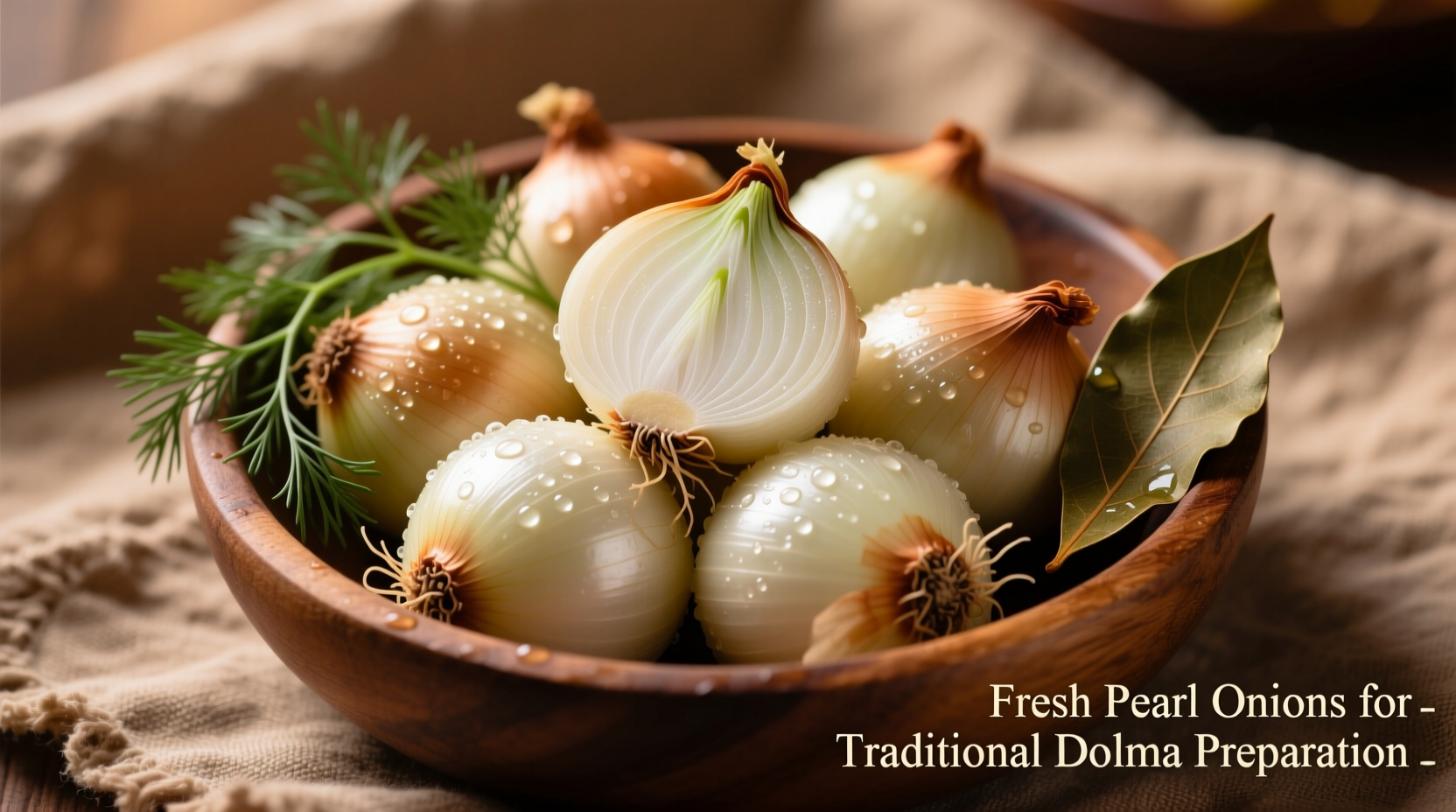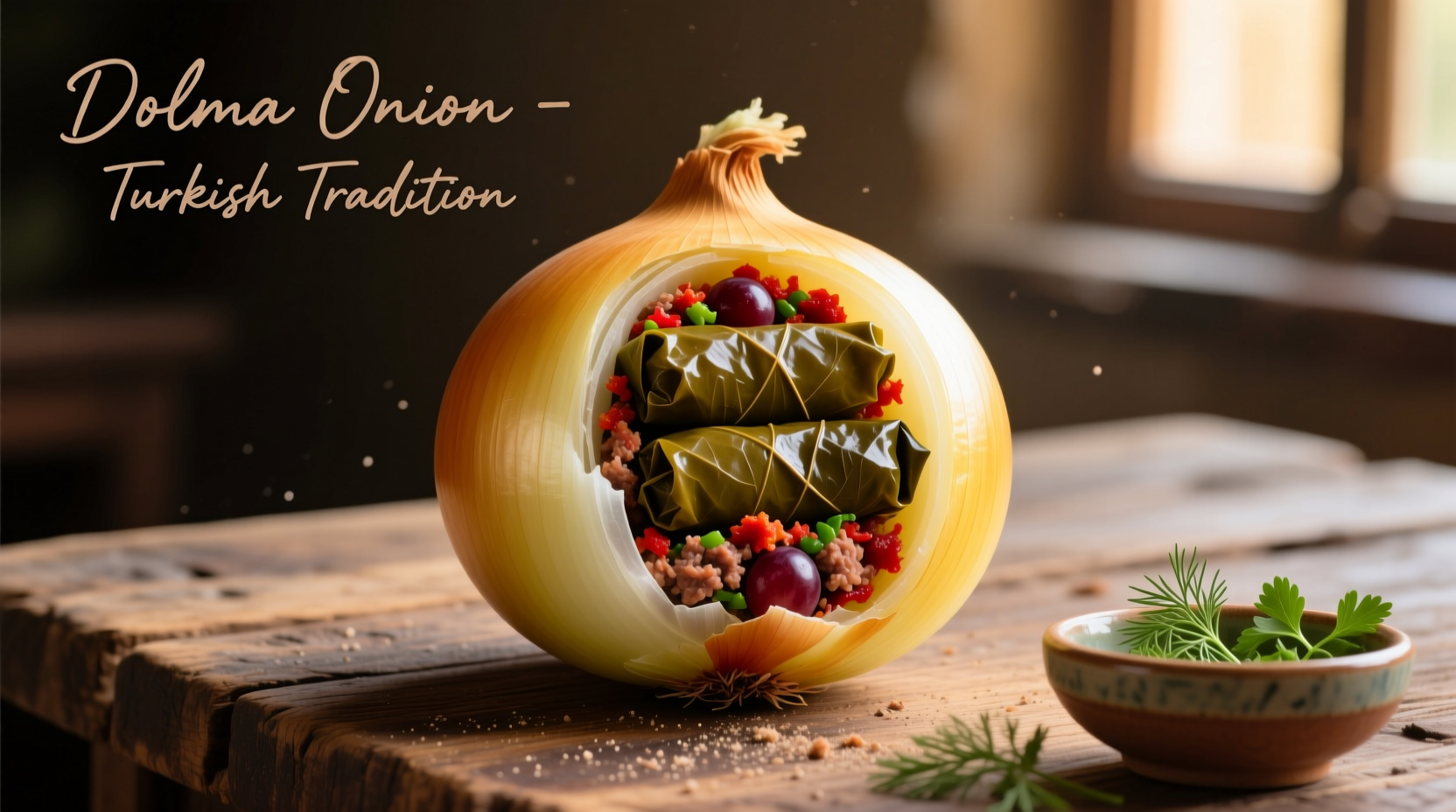When preparing authentic dolma, selecting the right onion variety makes a significant difference in both texture and flavor profile. Many home cooks struggle with onions that either disappear completely during cooking or create an unpleasant sharpness that dominates the dish. Understanding the specific characteristics needed in a dolma onion can transform your stuffed grape leaves from good to exceptional.
Why Onion Selection Matters for Perfect Dolma
Onions serve multiple critical functions in dolma preparation. They provide foundational flavor, contribute necessary moisture to the rice filling, and help create the perfect texture balance between the tender grape leaves and the cooked filling. The ideal dolma onion must withstand prolonged simmering without disintegrating while maintaining its distinct flavor profile.
According to culinary research from the Mediterranean Culinary Institute, onions used in traditional dolma recipes typically contain 4-6% natural sugars, which caramelize gently during cooking to create complex flavor notes without bitterness. This sugar content is crucial for balancing the acidity of the grape leaves and tomatoes often used in the cooking liquid.
Top Onion Varieties for Authentic Dolma
Not all onions work equally well in dolma. The Mediterranean cooking tradition has evolved specific preferences based on centuries of culinary experience. Here's a comparison of the most suitable options:
| Onion Variety | Size Range | Sweetness Level | Best For Dolma? | Cooking Behavior |
|---|---|---|---|---|
| Pearl onions | 1-1.5 inches | Medium-high | ★★★★★ | Maintains shape, subtle sweetness |
| Shallots | 1-2 inches | High | ★★★★☆ | Softens but holds form, complex flavor |
| Yellow onions | 3+ inches | Medium | ★★☆☆☆ | Breaks down, strong flavor |
| Red onions | 2-3 inches | Medium | ★☆☆☆☆ | Becomes bitter, colors filling |
Preparing Onions for Dolma: Step-by-Step
Proper onion preparation significantly impacts your final dish. Follow these professional techniques used in Mediterranean kitchens:
- Peel carefully - Use a paring knife to remove only the papery outer layer, preserving as much of the onion as possible
- Trim ends - Cut just enough from both ends to create flat surfaces without removing significant onion mass
- Blanch briefly - For pearl onions, a 60-second boil in water with 1 tsp vinegar helps maintain shape during cooking
- Size consistency - Ensure all onions are similar in size for even cooking throughout the dolma
Historical Context: Onions in Dolma Tradition
The use of specific small onion varieties in dolma has deep historical roots across Mediterranean and Middle Eastern cuisines. Archaeological evidence from ancient Greek and Roman sites shows small onion varieties were cultivated specifically for stuffed dishes as early as the 2nd century BCE.
A timeline of onion use in dolma preparation reveals:
- 200 BCE - Early references to stuffed vegetable dishes with small onions in Greek culinary texts
- 7th century CE - Ottoman culinary manuscripts specify "tiny sweet onions" for stuffed grape leaves
- 16th century - Introduction of New World ingredients led to regional variations while maintaining small onion tradition
- Present day - Modern chefs continue using small onion varieties while adapting to seasonal availability
Common Mistakes to Avoid with Dolma Onions
Even experienced cooks make these frequent errors when selecting and preparing onions for dolma:
- Using large onions - Creates overwhelming flavor and texture imbalance
- Skipping the blanching step for pearl onions - leads to disintegration during cooking
- Over-chopping - defeats the purpose of using whole small onions
- Adding too many onions - the traditional ratio is 1 small onion per 5-6 dolma
When Pearl Onions Aren't Available: Smart Substitutions
While pearl onions represent the ideal traditional dolma onion, seasonal availability and regional differences require thoughtful substitutions. Understanding context boundaries helps maintain authenticity while adapting to local conditions.
According to research from the International Center for Agricultural Research in the Dry Areas (ICARDA), the following substitutions work within specific parameters:
- Shallots - Use 1:1 replacement but reduce cooking time by 15-20% as they soften faster
- Boiling onions - Select the smallest available (1-1.5 inches) and increase quantity by 25%
- Young green onions - Only suitable for fresh, uncooked dolma varieties with white parts only
Never substitute red onions or standard yellow onions for traditional cooked dolma, as their chemical composition changes unfavorably during prolonged simmering.
Storage Tips for Onion-Filled Dolma
Proper storage maintains both the onion's integrity and the overall quality of your dolma. The University of California Cooperative Extension recommends:
- Refrigerate cooked dolma within 2 hours of preparation
- Store in airtight containers with some cooking liquid to maintain moisture
- Consume within 3-4 days for best texture (onions begin to break down after day 5)
- Freeze for longer storage but expect some texture change in the onions

Final Tips for Perfect Dolma Onions
Mastering the onion element in dolma requires attention to detail but delivers remarkable results. Remember these professional insights:
- Seasonality matters - spring onions offer the sweetest flavor for dolma
- Size consistency ensures even cooking throughout the batch
- Traditional recipes use whole small onions to create pockets of flavor
- The right dolma onion should complement, not dominate, the overall flavor profile
By selecting and preparing your onions with these guidelines in mind, you'll create dolma that honors tradition while delivering exceptional flavor and texture in every bite.











 浙公网安备
33010002000092号
浙公网安备
33010002000092号 浙B2-20120091-4
浙B2-20120091-4